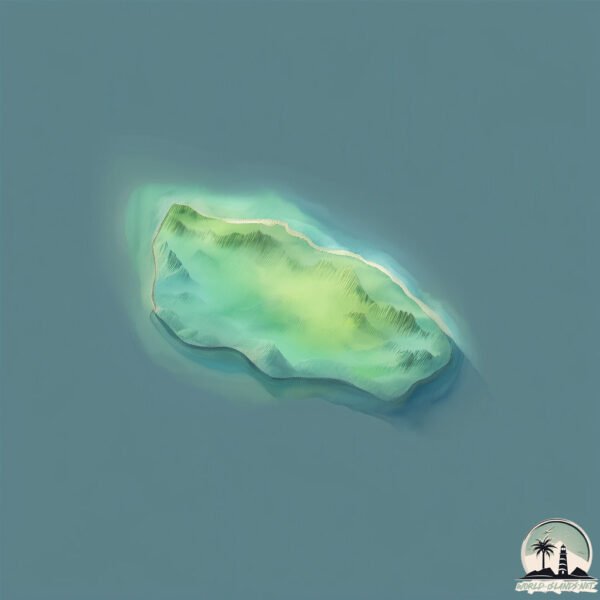Pulau Helehanak

Welcome to Pulau Helehanak, a Tropical island in the Timor Sea, part of the majestic Indian Ocean. This guide offers a comprehensive overview of what makes Pulau Helehanak unique – from its geography and climate to its population, infrastructure, and beyond. Dive into the details:
- Geography and Size: Explore the island’s size and location.
- Climate and Weather: Weather patterns and temperature.
- Topography and Nature: Uncover the natural wonders of the island.
- Infrastructure and Travelling: Insights on reaching, staying, and making the most of your visit.
- News and Headlines: Latest News.
Geography and size of Pulau Helehanak
Size: 0.125 km²
Coastline: 1.4 km
Ocean: Indian Ocean
Sea: Timor Sea
Continent: Asia
Pulau Helehanak is a Tiny Island spanning 0.125 km² with a coastline of 1.4 km.
Archipel: Malay Archipelago – The world’s largest archipelago, located between mainland Southeast Asia and Australia, known for its immense biodiversity and cultural diversity.
Tectonic Plate: Timor – A small tectonic plate in the Timor region, primarily under the Timor Sea. It’s involved in the collision between the Australian and Eurasian plates, contributing to the region’s seismic activity and the uplift of the island of Timor.
The geographic heart of the island is pinpointed at these coordinates:
Latitude: -10.95477088 / Longitude: 122.8803227
Climate and weather of Pulau Helehanak
Climate Zone: Tropical
Climate Details: Tropical Savanna, Wet
Temperature: Hot
Climate Characteristics: Defined by distinct wet and dry seasons with high temperatures year-round. Pronounced rainfall occurs during the wet season, while the dry season is marked by drought.
Topography and nature of Pulau Helehanak
Timezone: UTC+08:00
Timezone places: Australia/Perth
Max. Elevation: -1 m
Mean Elevation: -1 m
Vegetation: Cultivated Land
Tree Coverage: 41%
The mean elevation is -1 m. Remarkably, this unique island barely emerges above the sea level, showcasing nature’s fascinating interplay with the ocean. The island is characterized by Plains: Flat, low-lying lands characterized by a maximum elevation of up to 200 meters. On islands, plains are typically coastal lowlands or central flat areas.
Dominating Vegetation: Cultivated Land
Areas dedicated to agricultural activities, growing crops like grains, vegetables, and fruits. These lands are usually human-modified landscapes. Pulau Helehanak has a tree cover of 41 %.
Vegetation: 1 vegetation zones – Minimal Diversity Island
These islands exhibit the most basic level of ecological diversity, often characterized by a single dominant vegetation type. This could be due to extreme environmental conditions, limited land area, or significant human impact. They represent unique ecosystems where specific species have adapted to thrive in these singular environments.
Infrastructure and Travelling to Pulau Helehanak
Does the island have a public airport? no.
There is no public and scheduled airport on Pulau Helehanak. The nearest airport is El Tari Airport, located 123 km away.
Does the island have a major port? no.
There are no major ports on Pulau Helehanak. The closest major port is KUPANG, approximately 117 km away.
The mean population of Pulau Helehanak is 115 per km². Pulau Helehanak is Moderately Inhabited. The island belongs to Indonesia.
Continuing your journey, Pulau Ndana is the next notable island, situated merely km away.
Mengapa Pulau Sebatik Terbagi Jadi 2 Negara Indonesia Dan Malaysia 🇮🇩🇲🇾



Indonesia is classified as Emerging region: MIKT: Mexico, Indonesia, South Korea, and Turkey – Economies recognized for their development potential and emerging market status. The level of income is Lower middle income.
News – Latest Updates and Headlines from Pulau Helehanak
Stay informed with the most recent news and important headlines from Pulau Helehanak. Here’s a roundup of the latest developments.
Please note: The data used here has been primarily extracted from satellite readings. Deviations from exact values may occur, particularly regarding the height of elevations and population density. Land area and coastline measurements refer to average values at mean high tide.
